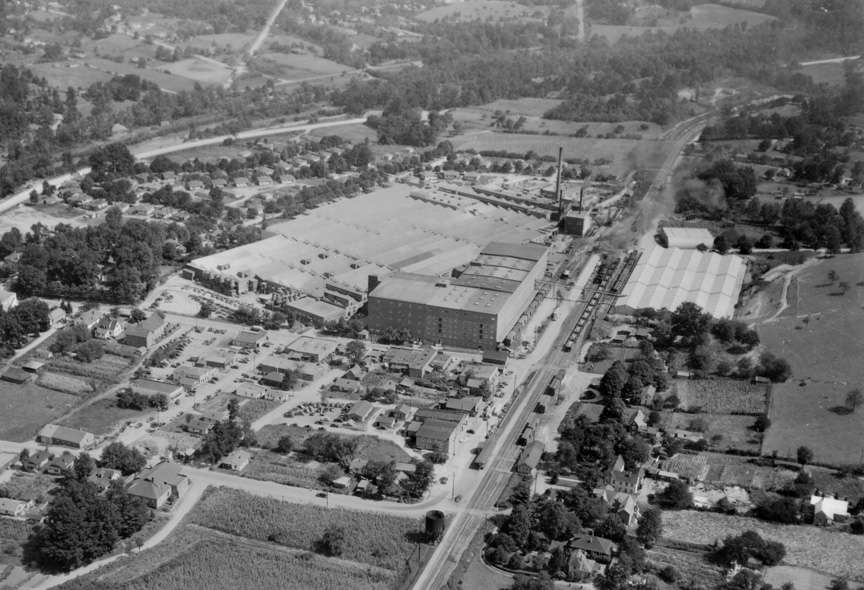Published in the Mountain Xpress
April 16, 2019 by Thomas Calder

This week’s column is an accompaniment to the preview article on Swannanoa Valley Museum & History Center’s upcoming exhibit, Beacon Blankets: The Mill (see “Swannanoa Valley Museum honors Beacon blankets,” April 10, Xpress).
On April 20, 1924, The Sunday Citizen announced that construction of the new Beacon Manufacturing Co. plant in Swannanoa would begin within 60 days. The cost of the site was estimated at $1 million. Described by the paper as “the largest manufacturers of cotton blankets in the United States,” the company’s flagship plant was based in New Bedford, Mass. where it employed 1,500 workers.
The Swannanoa factory, the article continued, “will be of a saw-tooth type construction, giving employes the benefit of natural light, and machinery of the highest type.” Along with the new plant, the company was also building 40-50 homes to house its future local workforce.
By January 1925, machinery was being shipped down from the north. Meanwhile, speculation over future expansion was already underway. That month, The Asheville Citizen reported on a conversation between the paper and Beacon’s owner, Charles Owen. “When asked as to whether the plant would be enlarged, Mr. Owen replied that in his opinion the Northern plant would never be extended, indicating that all future increases in manufacturing capacity would be at Swannanoa,” the article read.
No matter its future plans, the mere arrival of the company led to immediate development within the area. On Feb. 15, 1925, The Asheville Citizen declared that “the first stages of a boom” had begun in Swannanoa. It continued:
“Much building is in progress and much more is in prospect — stores that will be needed with the increase population are being planned and among the first to begin actual building is the Drug store that is to be opened within the next six weeks.”
The following month, on March 10, 1925, the town celebrated the opening of the Swannanoa Bank and Trust Co. According to The Asheville Citizen, hundreds of people flocked to the new building, which the paperdescribed as “strictly up to date and modern in every respect.” The bank thanked its new patrons by offering cigars and carnations that day.
On April 5, 1925, The Sunday Citizen observed that Swannanoa had gone from “a tiny village … [to] a young town.” As evidence, it pointed to the near completion of the Beacon factory, along with the recent $9,000 “hard-surface road from the Black Mountain Highway to the bleachery … known as Whitson Avenue.”
In addition, the paper continued, “Numerous new stores have been erected, filling stations have sprung up and on all sides are signs of business and industrial activity.”
Two months later, Beacon was fully operational. At the time of its opening, it employed 200 workers and had 65 cottages inside its mill village. As with the town’s bank, The Asheville Citizen described the factory as “strictly modern in every detail.”
Meanwhile, the paper continued, “All roads in the village have been graded, paths laid out and trees planted and a lighting system is being installed.” The company was also in the midst of completing a baseball field for its employees.

“The new plant is a great asset to Swannanoa and will furnish employment for many residents of that section,” the article concluded. “It is believed that the area around Swannanoa will eventually be the principal manufacturing area of Western North Carolina and officials of the Beacon Manufacturing Company have expressed great faith in the future.”
In 1933, Beacon shut down its New Bedford plant, relocating all operations to Swannanoa. At its peak, says Anne Chesky Smith, director of the Swannanoa Valley Museum & History Center, the company employed over 2,000 workers. On April 15, 2002, the Swannanoa factory closed. By that time, its total number of employees had dwindled to roughly 300.
Editor’s note: Peculiarities of spelling and punctuation are preserved from the original documents.
